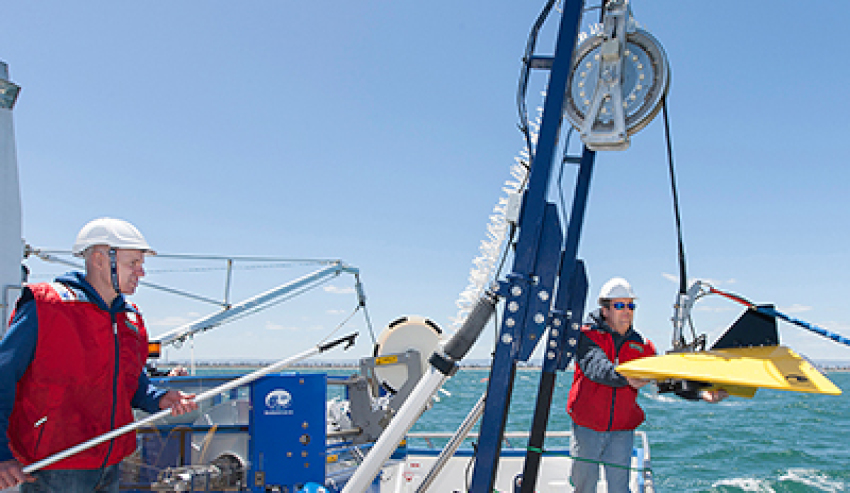Defence Science and Technology has successfully patented leading-edge single-photon avalanche detector (SPAD) technology, designed for the low-light detection of underwater objects.
To continue reading the rest of this article, please log in.
Create free account to get unlimited news articles and more!
Defence Science and Technology scientist Joyce Mau served as a key member of the team responsible for developing a maritime application for the DST-developed SPAD technology to be mounted on a gimbal on a hovering drone tethered above the ocean surface, scanning the depths for underwater vehicles and sea mines.
After receiving funding from RAAF Plan Jericho, the team quickly moved from a plan on paper to proof of concept at sea.
Mau explained, "This is new territory for our SPAD system, so we wanted to make sure we could see through water before more complex at-sea trials."
DST scientists travelled to Fleet Base West (FBW) at HMAS Stirling to point the SPAD sensor off the side of a boat out to sea. They also took the opportunity to measure the open water transparency using Secchi disks.
These are pizza-sized disks painted with alternating black and white quadrants, and are lowered into a body of water until no longer visible. This depth of disappearance, called the Secchi depth, is a measure of the transparency of the water.
"The ultimate system would use a tether comprising power supply and fibre optic data cabling to remove the need for wireless communications," Mau added.
The team successfully demonstrated underwater detection, and Mau said there is still plenty of room for improvement, including optimising the optics and image processing.
The current SPAD chip, revolutionary though it is, has a mere 32×32 pixels of resolution. Team leader Dennis Delic said the new 256×256 version of the chip will dramatically improve the sensor's capability.
This "3D" chip has been designed in collaboration with Milan Polytechnic, Monash University and chip fabrication specialists SilTerra (Malaysia) and the Fraunhofer Institute (Germany). Two chip layers, one each from SilTerra and Fraunhofer, will be joined together to create a unique sensor.
Initial trials with a custom-built, heavy-lift, un-piloted multi-copter version of the SPAD system were conducted over the waters off the South Australian coastline recently. Mau said they were very pleased with the results.
Stephen Kuper
Steve has an extensive career across government, defence industry and advocacy, having previously worked for cabinet ministers at both Federal and State levels.

 Login
Login








